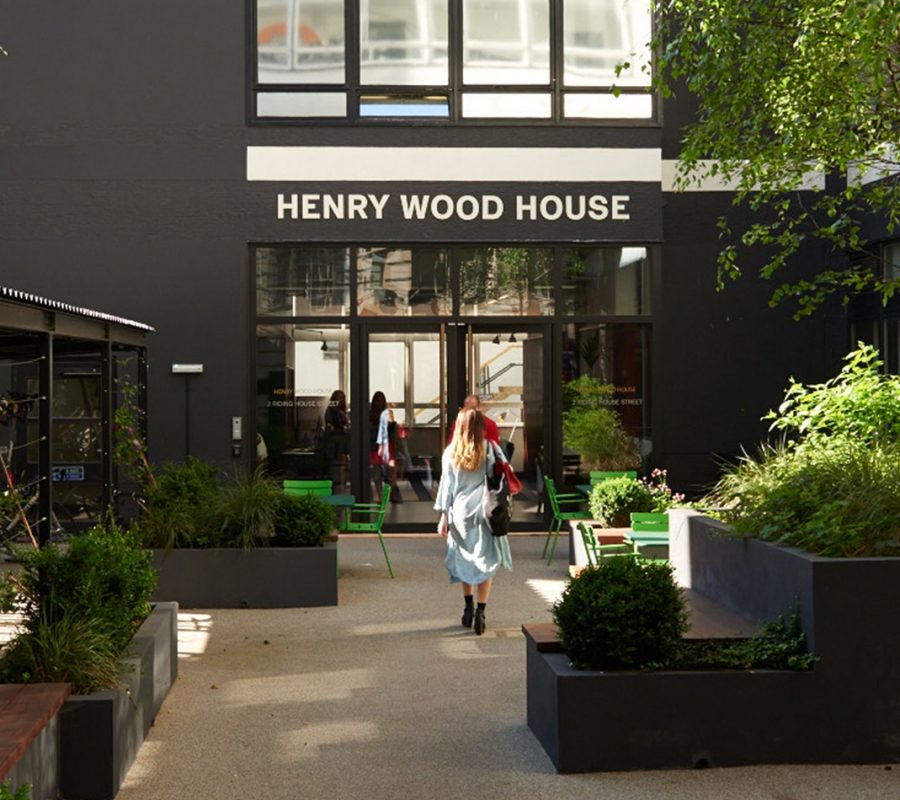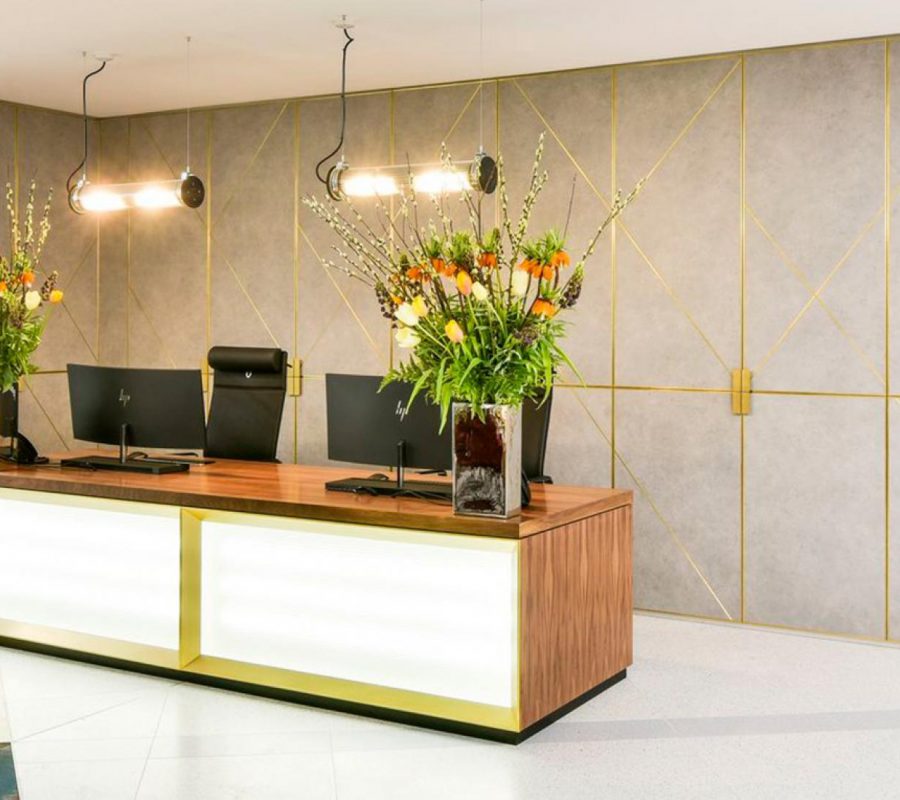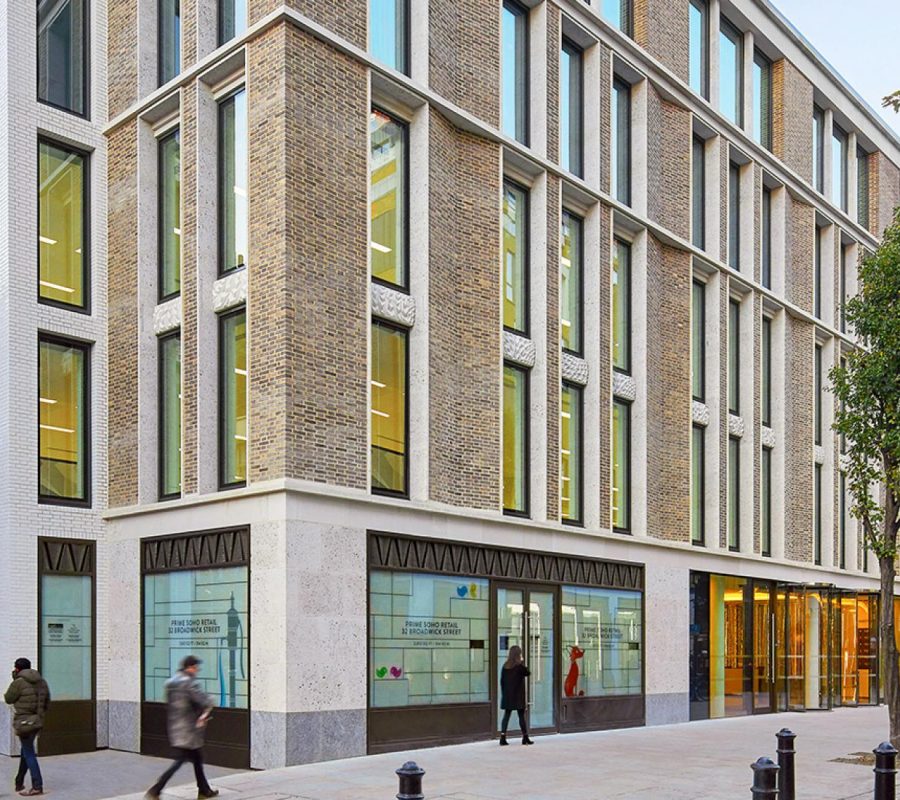Location:Oxford Circus
Office Space near Oxford Circus and Oxford Street
Oxford Circus is the road that opened in 1819, connecting Oxford Street with Regent Street in London’s West End.
Its name derives from the Latin for ‘circle’ and was designed to be a roundabout by the designer of Buckingham Palace, John Nash, as part of the development of Regent Street.
The Principal Surveyor of the London Office of Works, Sir Henry Tanner, redesigned it between 1913 and 1928 around a series of four quadrant buildings, which are now Grade II listed buildings. Sir Tanner was also responsible for the design of several other listed buildings throughout the United Kingdom, including the principal post offices of many UK cities.
Sir Tanner’s design had been inspired by 18th-century French architecture, and each quadrant was symmetrical.
The buildings were constructed of Portland stone, and the northeastern quadrant was originally occupied by the Peter Robinson department store. Bombs damaged it badly in 1940 during World War II, but it was quickly repaired to a high standard. The BBC appropriated part of the quadrant for overseas broadcasting for the remainder of the war.
In 1944, the building was sold to the London Co-operative Society. Through a series of mergers and acquisitions, Peter Robinson became Topshop, which occupied the site until 2020, when it fell into liquidation. At its peak, the clothing retailer welcomed 28,000 shoppers per day.
Oxford Circus tube station opened in 1900 when the first section of the Central line developed. The station is an interchange between the Bakerloo, Central and Victoria lines and is, today, the fourth-busiest station on the London Underground.
Its pedestrian crossing is also one of the busiest crossings in London. The crossing between Oxford Street and Regent Street is used by over 40,000 pedestrians per hour at peak times.
Oxford Street is the 1.2-mile (1.9 km) road that runs west, beginning at St Giles Circus, meeting Charing Cross Road and Tottenham Court Road. It runs past Rathbone Place, Wardour Street and Great Portland Street to Oxford Circus, where it meets Regent Street. From there, it continues past New Bond Street, Bond Street Station and Vere Street, ending at Marble Arch.
The road was originally part of the Via Trinobantina, a Roman road between Essex and Hampshire that ran via London. Through the Middle Ages, it was known as Tyburn Road and became one of the major routes in and out of London.
At different times, the road was also known as Uxbridge Road, Worcester Road, and Oxford Road. On Ralph Aggas’ 16th-century Plan of London, the road is described partly as “The Waye to Uxbridge” followed by “Oxford Road.” The plan depicted rural farmland at the present junction of Oxford Street and Rathbone Place. By 1678, it was known as the King’s Highway and, by 1682, the Road To Oxford.
By 1730, the road had become known as Oxford Street. Development of the street began in the 18th century after the Earl of Oxford purchased much of the farmland.
After his death, the estate was inherited by his daughter, the Duchess of Portland. It was then passed down to successive dukes as the Portland Estate before becoming the Howard de Walden Estate in 1879.
The Howard de Walden Estate progressively sold off its Oxford Street holdings in the first half of the twentieth century.
In 1772, The Pantheon opened at Oxford Circus. Established as a place for public entertainment, the surrounding area became popular for entertainment with performers such as bear-baiters, and theatres and public houses were built.
The area was not attractive to the middle and upper classes, though, due to the nearby Tyburn gallows, which were located by what today is Marble Arch and the notorious St Giles slum.
By the end of the century, the gallows had been removed, and buildings had been developed along Oxford Street between St Giles Circus and Park Lane. These were a mix of residential houses, shops and places of entertainment.
The Pantheon closed as an entertainment venue in 1814 and reopened twenty years later as a covered bazaar. This prompted the Queen’s Bazaar across the road, which had never gained popularity, to close. In 1836, the Princess’s Theatre opened on the site of the closed bazaar.
By the 1930s, Oxford Street was almost entirely retail, and today, it is Europe’s busiest shopping street, with around half a million visitors per day.
It forms an integral part of the West End shopping district, along with other streets, including Bond Street, Piccadilly, Regent Street, and Covent Garden.
Businesses of all sizes from various industries choose to rent office space near Oxford Circus and on Oxford Street. They can choose from various buildings offering traditionally leased offices and modern, flexible office and workspace solutions.
Also known as flex spaces, businesses can choose private serviced offices, managed office suites, and co-working spaces held on flexible licences that offer shorter terms than leases and provide the option to extend terms.
As the contracts are flexible in several ways, tenants can move into larger spaces during their tenancy if required, with some buildings offering space for 250+ desks.
The rental fees for these flexible business spaces are all-inclusive and cover utilities, cleaning, furnishing, IT, business lounge access, and enhanced services such as reception, secretarial support, and concierge services. As these spaces are fully fitted and ready to move into, the incoming tenant requires little or no upfront capital expenditure unless a custom office is required.
The premium flexible workspaces have first-class amenities such as barista bars, private phone booths, quiet zones, and gyms. They are designed with ESG considerations to meet the sustainability requirements of their occupiers.
As well as the exceptional amenities provided by these buildings, office space occupiers near Oxford Circus and on Oxford Street enjoy too many shopping, dining and leisure facilities to count on their doorsteps.
Of note is Selfridges at No. 400 Oxford Street, which was opened in 1909 by Harry Gordon Selfridge, who was responsible for transforming shopping in the United Kingdom from a chore to something of an experience.
He had become acquainted with John Logie Baird, who lived in nearby Mayfair. In the 1920s, he allowed Baird to demonstrate his new invention in the store and subsequently became the first retailer in the world to sell televisions.
Transport links are also excellent, with stations such as Bond Street, Marble Arch, Tottenham Court Road, Oxford Circus, and Piccadilly Circus all within easy walking distance.



